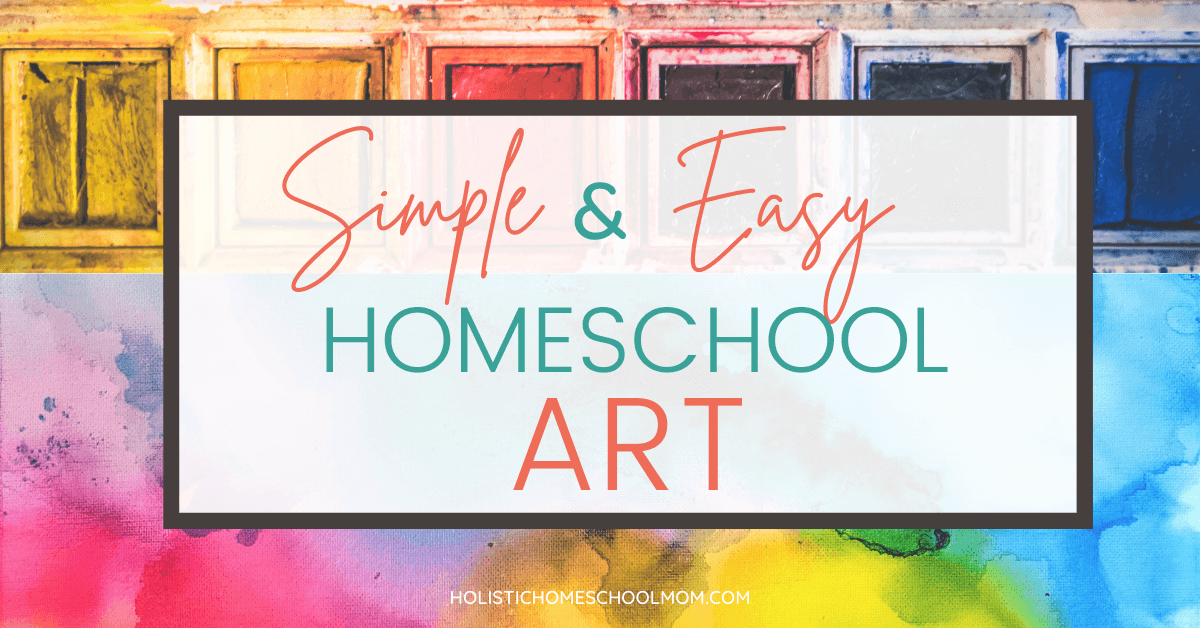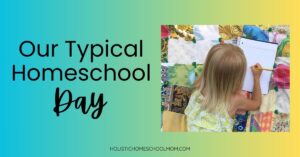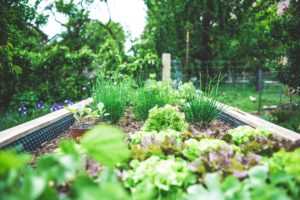Art in your homeschool doesn’t have to be complicated or expensive. Over the past 11 years of homeschooling, I’ve found several resources for simple and easy homeschool art, and I’m sharing them with you!
When I started homeschooling, my thoughts about art were focused mainly on crafts. You know the ones… geared mostly toward young kids that involve cutting, pasting, glitter and string. The ones that can kinda get messy and leave you with a good 20 minutes of cleaning to do afterwards.
Ugh.
I get it. Some of you are in that season of messy crafting that your kids love and glitter is what the kids want. I have a preschooler who loves sparkly things. So just let them do the glitter craft. And then clean for 20 minutes.
But you don’t have to get stuck there. There is light at the end of the tunnel littered with popsicle sticks, messy glue and glitter that seems to stick to everything but the page it was intended.
I’m thankful that our art has evolved beyond crafts into a subject area that I truly enjoy alongside my kids.
My hope is that you will find a happy place with art that works with your kids and your schedule, and everyone enjoys together.
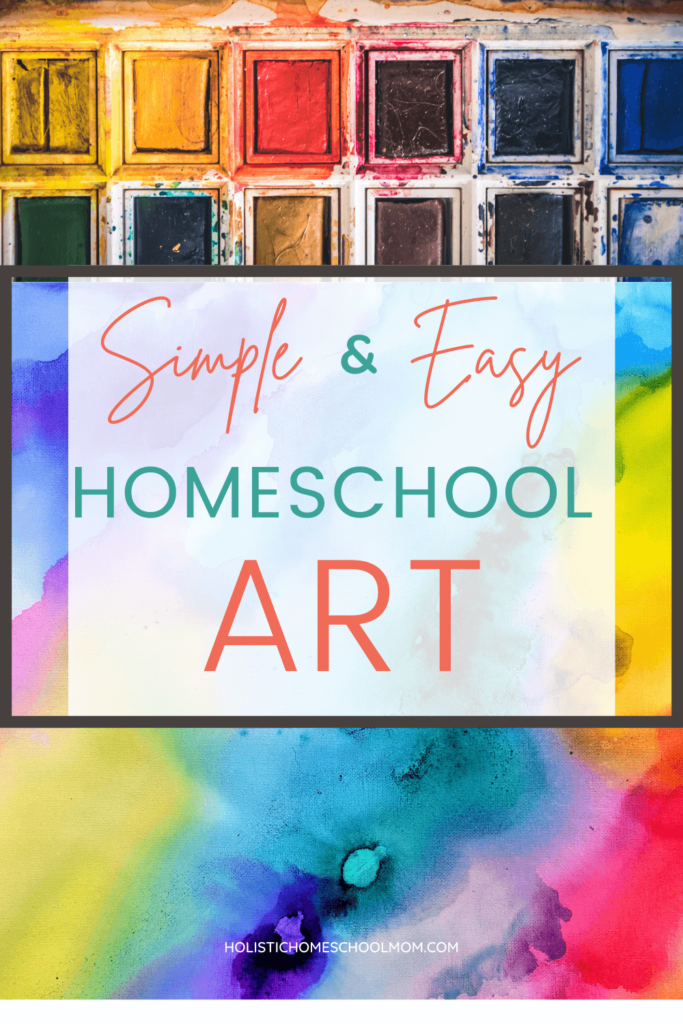
6 Resources For Easy and Affordable Homeschool Art
Homeschooling on a budget is a priority for our family, so all of the resources mentioned here are either free or budget-friendly.
Deep Space Sparkle
- Geared towards anyone teaching art, so includes hints, tips and ideas for how to teach art successfully
- Free (but also has a paid member option)
- Can select topics by subject, season, technique, and grade level (K-6)
- Many projects have an accompanying instructional video
Using this site requires a bit of planning for me. I need to look through the projects, make sure I have the materials, and am confident guiding the kids along.
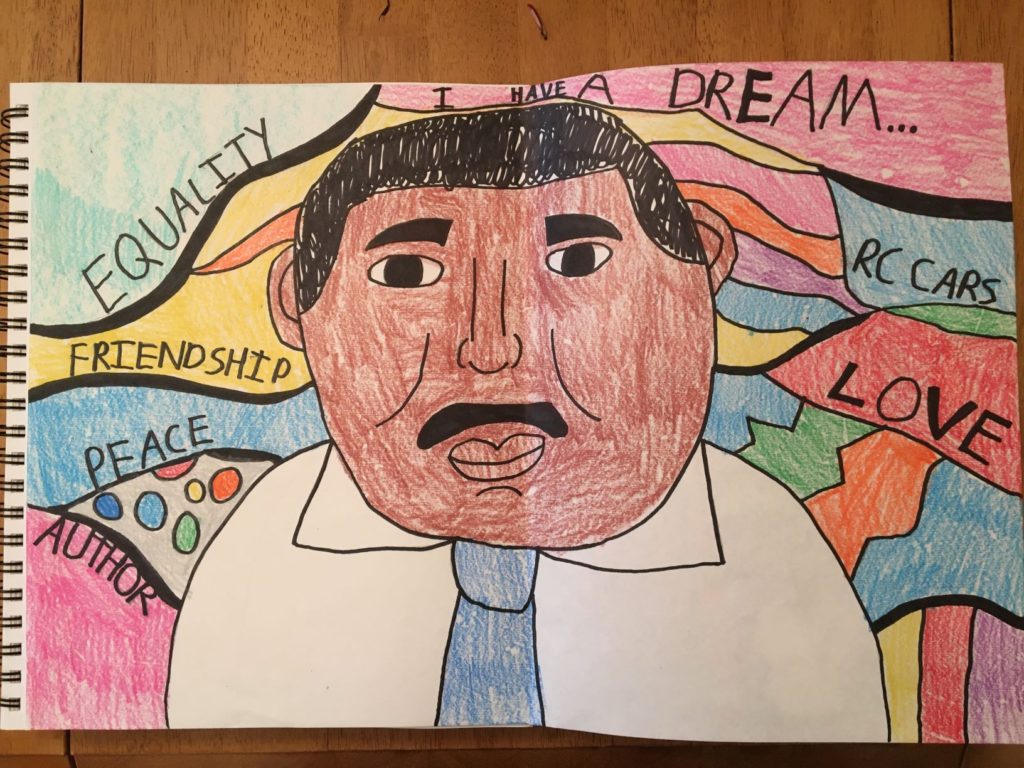
Art for Kids Hub
- Quick, simple videos for kids to follow along on their own
- Supplies you most likely have on-hand
- Options from seasonal drawings, to well-known cartoon characters, etc.
- Ages pre-K and up
I mostly use this program when I haven’t had time to plan for a particular project, but I want the kids to create something they enjoy. I know I have the necessary supplies, and the kids can choose their own video, easily grabbing what they need.
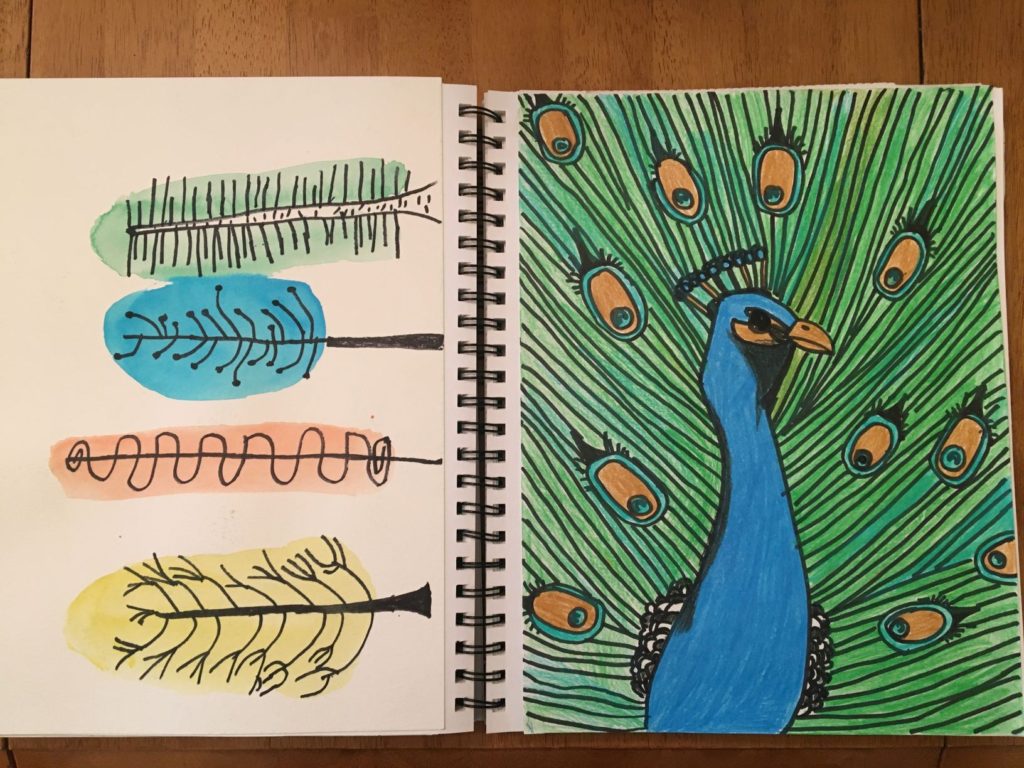
Easy Peasy All in One Homeschool
This program is an entirely free and complete online homeschool curriculum for ages preK-12. I’ve used several of their courses besides art.
For art, there is a drawing and painting course geared for ages 7-12. There’s also a course titled Drawing Professionally for ages 10-adult.
I used the drawing and painting courses for my 4th and 6th graders last year. They weren’t able to finish the course so they’re continuing it this year.
Additionally, there are four art education classes students can choose from: Ancient, Early American, Cultures and Modern.
One week the course work might simply be reading about an artist and viewing some of their work. The next week, a small craft or activity to complete. Each lesson is fairly short, but the beauty is that the work is done for you in that the links are readily provided so the kids can work independently.
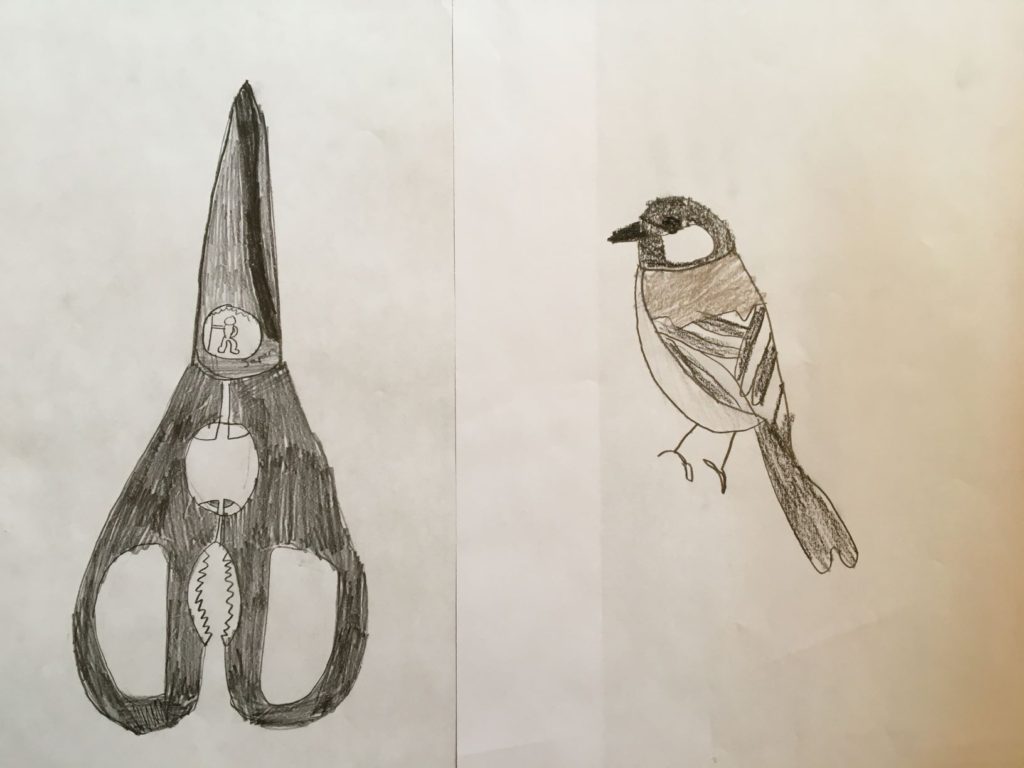
Picture Study Portfolios-Simply Charlotte Mason
This is the first year I have used this product from SSM, and it has been worth the investment. I wish I would’ve used these sooner.
Picture study is an important part of the “riches” of a Charlotte Mason homeschooling approach. It involves studying several works of a particular artist over a period of time, learning about the artist’s life and becoming familiar with their artwork.
These portfolios come with a booklet about the artist and eight quality reproductions of some of the best known works of the artist. I used to try to do all this work myself, but it was time consuming and printer-ink consuming. It has saved me time and effort and has helped me more consistently engage in picture study. Again, planning already done for you!
While we are currently studying Jean Francois Millet (we do this weekly during our morning time), SSM offers over 20 different artists to choose from. I’ll have a hard time deciding who will be next!
Nature Sketching
The last way I incorporate art into our homeschool is with nature sketching in a designated nature notebook. I’ve been doing this with the kids since kindergarten, and it’s easy as can be. Each child has a simple drawing notebook with good quality paper and pencils.
About once a week, I ask them to sketch something from nature. They can wander outside, find a plant in the house, look for bugs, etc. Then, we investigate further and add details about the particular item. It’s fun seeing the quality of their work improve over time. It also gets them outside and paying attention to nature.

Draw Write Now
I used this drawing and handwriting resource when the kids were younger, probably starting in 1st or 2nd grade. It has simple step-by-step drawings and you can choose from various themes.
Honestly, we never used the handwriting portion, but they were able to work their way through the book, and learned interesting facts along the way. We aren’t currently using this, but I’ll pull this resource out again as my preschooler gets older.
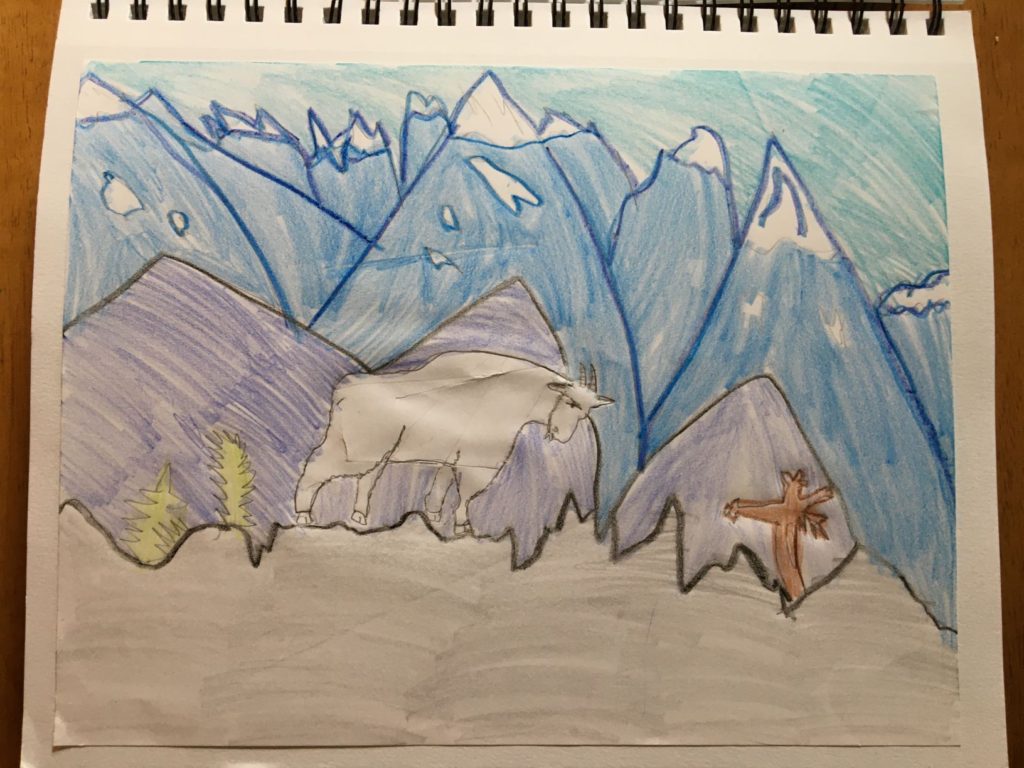
Planning Homeschool Art Projects
I have always struggled with being intentional about planning our art projects. Sometimes, investing money in a program that is already planned out will help you create the art learning you envision for your kids.
On the contrary, you may invest money in something you or your kids don’t like, and that feels like a big loss. Using this FREE Art Project Planner will help you create the art environment you want in your homeschool.

Three Tips for Homeschool Art Projects
1-Try to engage in the art project alongside your kids.
While I don’t always do art projects with my kids, I will sometimes create alongside them. I think they are happiest when I do this. They seem to enjoy watching the process and hearing my comments along the way.
It’s good for our kids to see that sometimes our artwork doesn’t go as planned. When I think my picture looks terrible, or my lines aren’t straight, I can model the diligence of finishing the project and not being overly critical of myself.
Kids often feel pressure to make their art look perfect from the start, not realizing that art is a skill developed with time and practice. We’ve had many discussions during art-time-meltdowns about these very issues.
Who knew art would lead into character building discussions?
2-Invest in basic supplies and keep them organized in one location. Build your supplies over time as your budget allows.
Maybe you only have markers, crayons and colored pencils the first year. Next year, budget for oil pastels, chalk pastels, and watercolor paints. For the first time this year, I invested in bulk watercolor paper, white sulphite paper, and varied colors of good quality construction paper.
3-Keep it simple and be confident in what you’re doing.
A good art education for your kids can be as easy as incorporating creative projects weekly, bi-weekly, or even just a couple times a month.
Try to learn about famous artists and their works, investigate different techniques and styles of art, and throw in a trip to the art museum, too.
Don’t forget to display that great art, either. Nothing makes my kids prouder than when I hang it up for all to see.

Allow art in your homeschool to be a life-giving experience. Tailor your simple and easy homeschool art to your children’s interests. Above all, let it be something that’s enjoyable, not insecurity-inducing!

